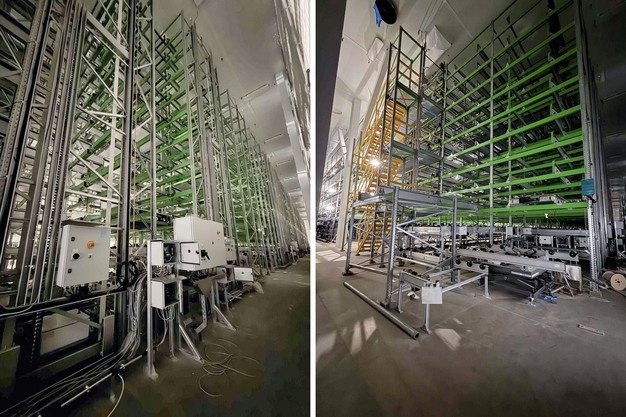Estimating food availability and self-reliance in island territories: Puerto Rico as a case study – Frontiers

Report on Food System Assessment in Small Island Developing States (SIDS)
A Case Study of Puerto Rico
Introduction: Aligning Food Systems with the Sustainable Development Goals
Comprehensive assessment of food systems in Small Island Developing States (SIDS) is frequently impeded by limited statistical capacity and a high degree of reliance on food imports. This challenge is particularly acute for non-independent island territories, which are often excluded from international food availability datasets and lack readily available local data. This report details a study that addresses these gaps, directly contributing to the monitoring and achievement of several Sustainable Development Goals (SDGs).
The research aligns with the following core SDGs:
- SDG 2 (Zero Hunger): By assessing food availability and self-reliance to enhance food security, improve nutrition, and promote sustainable agriculture.
- SDG 3 (Good Health and Well-being): By comparing food availability against dietary recommendations to identify nutritional gaps and promote healthy lives.
- SDG 12 (Responsible Consumption and Production): By incorporating food loss and waste estimates to promote sustainable production patterns.
- SDG 17 (Partnerships for the Goals): By developing a replicable methodology to enhance statistical capacity in SIDS for evidence-based policymaking.
Methodology: A Framework for Monitoring SDG Progress
Using Puerto Rico as a case study, a novel methodology was developed to quantify food system metrics in a data-scarce environment. This approach provides a replicable framework for other island territories to monitor progress towards food sovereignty and related SDGs.
Data Aggregation and Analysis
- Local import, export, and production records from fiscal years 2017–2019 were compiled.
- Representative food loss and waste estimates were integrated into the analysis, directly addressing the targets of SDG 12.3 (halve food waste).
- A novel data crosswalk was created to standardize and synthesize disparate data sources, a critical step for enhancing the statistical capacity required for SDG 17.
- Metrics for food availability, agricultural self-reliance, food self-reliance, and dietary self-reliance were calculated.
Key Findings: Gaps in Self-Reliance and Nutritional Alignment
The analysis revealed significant gaps between local production capacity and the nutritional needs of the population, highlighting critical areas for policy intervention to advance SDG 2 and SDG 3.
Food Availability and Self-Reliance Metrics
- Highest Per-Capita Availability: Oils, grains, and protein foods.
- Agricultural Self-Reliance (based on raw production):
- Dairy: 95%
- Fruits: 47%
- Vegetables: 33%
- Food Self-Reliance (incorporating processed foods):
- Dairy: 70%
- Vegetables: 22%
- Dietary Self-Reliance (local production vs. dietary recommendations): Less than 20% across all food groups, indicating a profound dependency on imports to meet nutritional guidelines.
Nutritional Implications for SDG 2 and SDG 3
When loss-adjusted food availability was compared to dietary recommendations, a significant misalignment was observed, posing challenges to achieving SDG 2.2 (end all forms of malnutrition) and SDG 3.
- Deficit: Availability of fruits and vegetables fell short of recommended dietary levels.
- Surplus: Availability of grains, oils, and protein foods exceeded recommended levels.
Conclusion: Strategic Implications for Sustainable Development
This study provides a critical evidence base for policymakers in Puerto Rico and other SIDS to develop strategies that strengthen local food systems and align them with public health goals. The findings underscore the urgency of increasing local production of nutrient-dense foods like fruits and vegetables to improve food security and health outcomes.
The methodology presented offers an instrumental tool for island territories to monitor progress towards food self-reliance and key targets within the 2030 Agenda for Sustainable Development. By enabling data-driven decision-making, this approach supports the creation of more resilient, sustainable, and equitable food systems, contributing directly to the ambitions of SDG 2, SDG 3, SDG 12, and SDG 17.
Analysis of Sustainable Development Goals in the Article
1. Which SDGs are addressed or connected to the issues highlighted in the article?
-
SDG 2: Zero Hunger
The article directly addresses food and nutrition security, which is the core of SDG 2. It investigates “food nutrition security and sovereignty across SIDS” and analyzes whether the available food supply meets population needs by comparing “loss-adjusted availability” with “dietary recommendations.” The focus on the availability of nutritious food groups like fruits and vegetables highlights the goal of ending malnutrition.
-
SDG 12: Responsible Consumption and Production
This goal is relevant through the article’s focus on sustainable food systems, specifically food self-reliance, local production, and food loss. The study quantifies “agricultural self-reliance” and “food self-reliance” to understand the sustainability of Puerto Rico’s consumption patterns, which are heavily dependent on imports. Furthermore, it explicitly incorporates “representative food loss and waste estimates” in its analysis, directly connecting to the goal of reducing food loss and waste along supply chains.
-
SDG 17: Partnerships for the Goals
The article highlights a critical challenge for SIDS: “limited statistical capacity” and the scarcity of reliable data for assessing food systems. By developing a “novel data crosswalk, adaptable to other island territories,” the research directly contributes to capacity-building for data collection and monitoring, which is a key aspect of SDG 17, particularly its targets related to data, monitoring, and accountability for developing states.
2. What specific targets under those SDGs can be identified based on the article’s content?
-
Under SDG 2 (Zero Hunger):
- Target 2.1: By 2030, end hunger and ensure access by all people… to safe, nutritious and sufficient food all year round. The article’s entire premise of developing datasets to quantify “food availability” and comparing it to “dietary recommendations” is an effort to assess whether the food supply is sufficient and nutritious for the population of Puerto Rico.
- Target 2.2: By 2030, end all forms of malnutrition. The analysis of specific food groups is a direct link to this target. The finding that “loss-adjusted availability fell short of dietary recommendations for fruits and vegetables” points to a risk of malnutrition that needs to be addressed through policy and production strategies.
-
Under SDG 12 (Responsible Consumption and Production):
- Target 12.3: By 2030, halve per capita global food waste… and reduce food losses along production and supply chains. The study’s methodology explicitly “combined with representative food loss and waste estimates” to create a more accurate picture of food availability, demonstrating the importance of accounting for and ultimately reducing food loss.
-
Under SDG 17 (Partnerships for the Goals):
- Target 17.18: By 2020, enhance capacity-building support to developing countries… and small island developing States, to increase significantly the availability of high-quality, timely and reliable data. The article’s problem statement focuses on “limited statistical capacity” and how “food production data are disaggregated, inconsistent, and scarce” in SIDS and territories. The research itself is a response to this gap.
- Target 17.19: By 2030, build on existing initiatives to develop measurements of progress on sustainable development… and support statistical capacity-building in developing countries. The development of “food availability and self-reliance metrics” and the “novel data crosswalk” are presented as new measurements and tools that can be used for “monitoring self-reliance in non-independent contexts,” directly aligning with this target.
3. Are there any indicators mentioned or implied in the article that can be used to measure progress towards the identified targets?
Yes, the article develops and uses several specific metrics that can serve as indicators:
- Per-capita food availability: The article calculates the “per-capita availability” for food groups like oils, grains, and protein foods. This serves as a direct indicator for assessing food sufficiency under Target 2.1.
- Loss-adjusted food availability vs. dietary recommendations: The comparison of food availability (after accounting for waste) with nutritional guidelines is a powerful indicator for Target 2.2. The finding that availability “fell short of dietary recommendations for fruits and vegetables” is a measurable indicator of a nutritional gap.
-
Agricultural, Food, and Dietary Self-Reliance Metrics: The article defines and quantifies three distinct self-reliance indicators:
- Agricultural self-reliance: Measures local production of raw commodities (e.g., “highest for dairy (95%), fruits (47%), and vegetables (33%)”).
- Food self-reliance: Measures local production including processed foods (e.g., “highest for dairy (70%), and vegetables (22%)”).
- Dietary self-reliance: Measures local production against dietary recommendations (e.g., “was less than 20% across food groups”).
These metrics can be used to track progress towards more sustainable and resilient local food systems (relevant to SDG 12) and food security (SDG 2).
- Food loss and waste estimates: The use of “representative food loss and waste estimates” is itself an indicator. Tracking this value over time would directly measure progress towards Target 12.3.
- Data availability and monitoring methodology: The “novel data crosswalk” methodology is proposed as a tool for other territories. Its adoption and use would be an indicator of enhanced statistical capacity, as called for in Targets 17.18 and 17.19.
4. Summary Table of SDGs, Targets, and Indicators
| SDGs | Targets | Indicators Identified in the Article |
|---|---|---|
| SDG 2: Zero Hunger |
2.1: End hunger and ensure access to safe, nutritious, and sufficient food.
2.2: End all forms of malnutrition. |
– Per-capita food availability (for grains, oils, protein foods). – Loss-adjusted availability of food groups (fruits, vegetables) compared against dietary recommendations. – Dietary self-reliance (percentage of dietary recommendations met by local production). |
| SDG 12: Responsible Consumption and Production | 12.3: Halve food waste and reduce food losses along production and supply chains. |
– Representative food loss and waste estimates. – Agricultural self-reliance percentage (by food group). – Food self-reliance percentage (incorporating processed foods). |
| SDG 17: Partnerships for the Goals |
17.18: Enhance capacity-building support to SIDS to increase availability of high-quality, timely, and reliable data.
17.19: Develop measurements of progress on sustainable development and support statistical capacity-building. |
– Development and application of a “novel data crosswalk” to overcome data scarcity. – Creation of specific metrics for “food availability and self-reliance” as new measurements of progress. |
Source: frontiersin.org

What is Your Reaction?
 Like
0
Like
0
 Dislike
0
Dislike
0
 Love
0
Love
0
 Funny
0
Funny
0
 Angry
0
Angry
0
 Sad
0
Sad
0
 Wow
0
Wow
0










































































